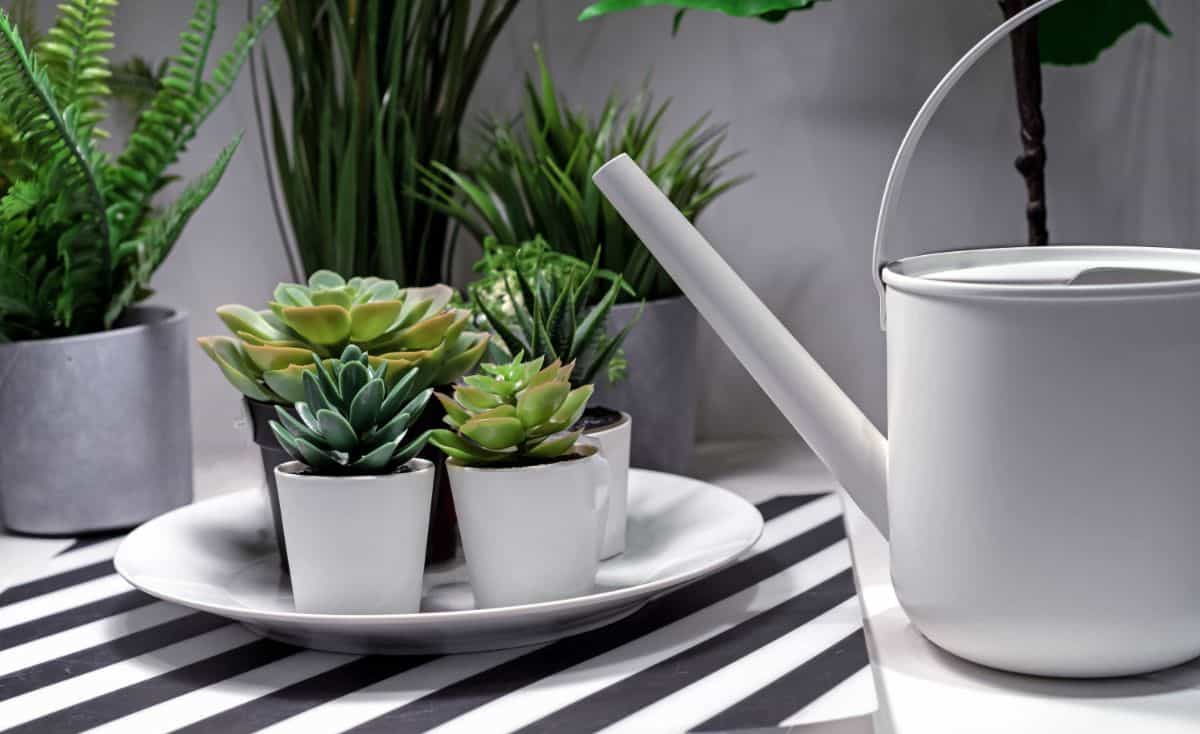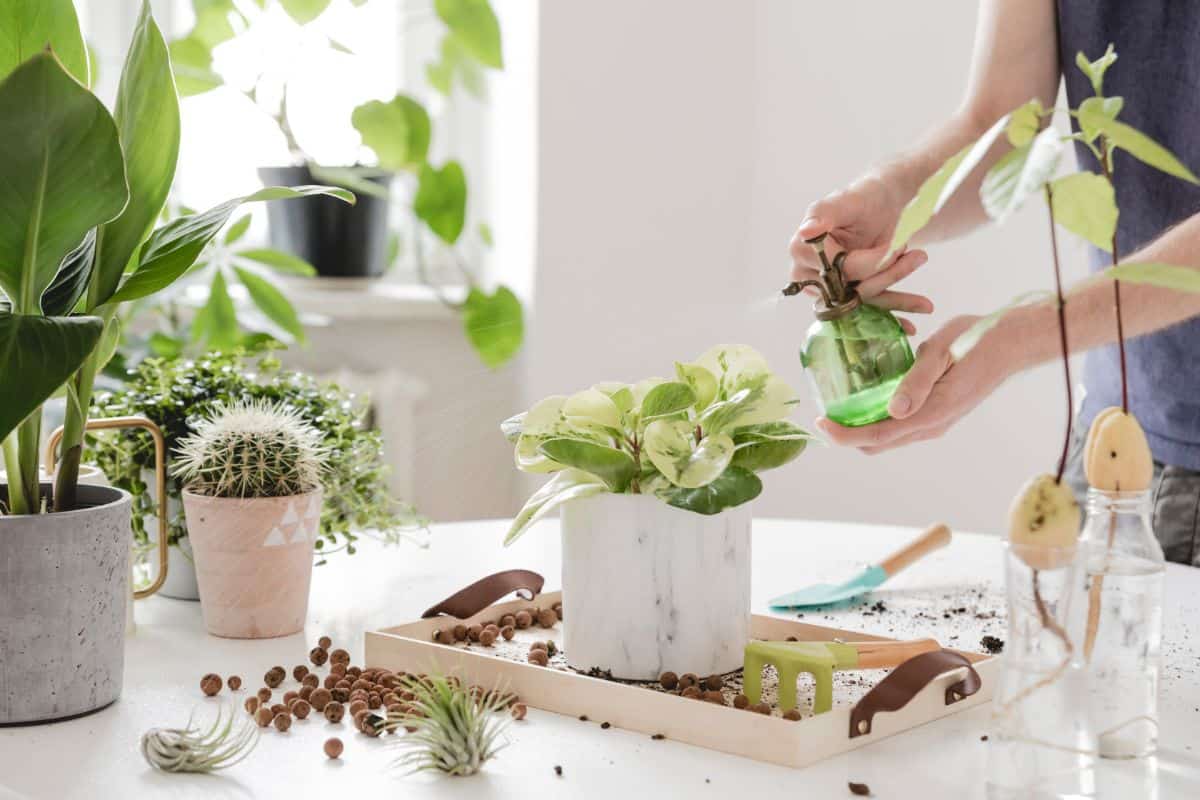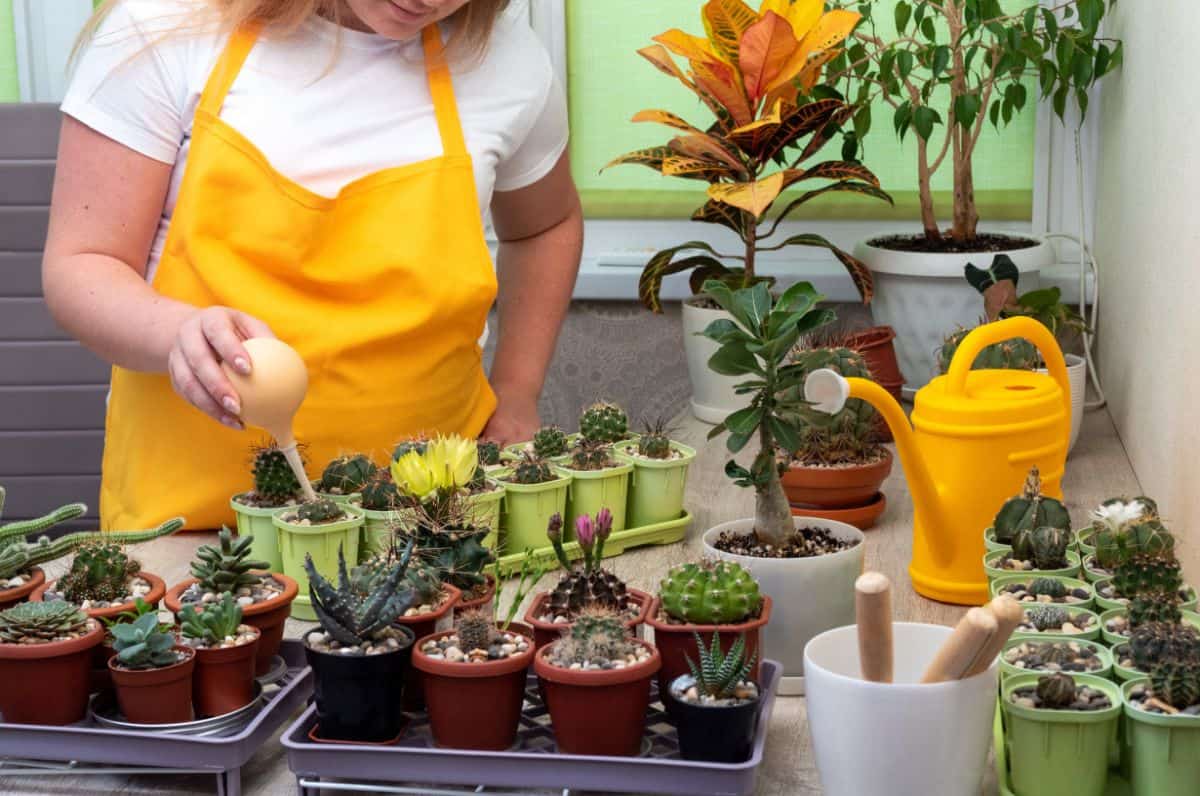
A lot of people are starting to discover their love for plants. Their interest paved the way and peaked the growth for succulent lovers.
If you are among them, you may have asked the question "Should succulents be watered from the bottom?" once in your venture. This strategy has been around for some time, and knowing what it is will give you the answer.
Hence, we have prepared a couple of helpful pieces of information to give you a good headstart. Let's learn about bottom watering, how it works with succulents, and how it can benefit you.
Jump to:
- What Is Bottom Watering?
- Why Should You Bottom Water a Succulent?
- What Are the Drawbacks of Bottom Watering Succulents?
- How To Bottom Water Your Succulents
- Step #1: Prepare the Pot
- Step #2: Fill a Container With Water
- Step #3: Place Your Plants
- Step #4: Check for Soil Moisture
- Step #5: Top-Water Your Plant
- How Much Time Do You Need for Bottom Watering?
- Should Succulents Be Watered From the Bottom?
What Is Bottom Watering?
Aptly named, bottom watering is a method of watering plants from the bottom up to strengthen their roots. You can do this by submerging the pot of your potted plant in a bigger container filled with water.
One of the significant advantages of this strategy is that it keeps your succulents moisturized at all times. This process is effective because the roots grow directly toward the direction of the moisture or water.
It also facilitates even water distribution and makes sure the moisture in the potting soil has full coverage on the plant.
Bottom watering has become popular over the years because it aids in the succulent's growth and strength. Moreover, it is so simple that you can bottom-water a large number of plants in one go.
Why Should You Bottom Water a Succulent?
There are several reasons why plant enthusiasts are advised to bottom water their plants. As someone who will be caring for succulents, you have to know the indications for this technique.
Most plants can be bottom watered, but there are instances where it may not be necessary. To help you decide on whether you should do this technique or not, we prepared some of the most common indications for it.
You can read each of the conditions mentioned below and determine whether this is a fit for you.
- Soil Is Not Absorbing Water
While you can prevent this, you may encounter instances where your succulent soil can't absorb water. That is usually because it has become hydrophobic. It can also be the outcome of the soil becoming root-bound.
When you bottom water, you give way to repairing compact, dry, hard, and water-repellent soil. It also prevents the reoccurrence of the development of hydrophobic soil in the future.
- Overgrown Roots
When your succulent's roots have overgrown, they stop getting enough water from top-watering. It is an indication for you to start bottom watering because this technique is excellent at replenishing moisture.
It also keeps it in a healthy state until it grows enough to be moved to a larger container.
- Humid Environment

If you reside in a humid or cold space, your plant becomes prone to fungus and bacteria growth. Since this is common in places of high humidity, the best bet would be to bottom water your plants.
This technique prevents the growth of bacteria, mold, and mildew. Some people prefer top watering, which is okay in areas that are dry and not humid. However, doing it during winter or in humid areas can bring your plants more harm than good.
- Pest Growth
If you notice your succulents starting to be infested by pests, it is time to switch your watering technique. Top watering will facilitate the growth of pests because of moisture or water in the soil. When you bottom water, you keep the area hydrated and dry enough to keep those pests away.
- Prevents Overwatering
No products found.
If you are scared that you have been overwatering your plants, try bottom watering. This method can be done with the use of timers to make sure you do not overwater them.
The process lets you remove your succulents from the water after it gets the amount it needs. Hence, it removes the risk of overwatering your beloved plants.
- Proper Root Nutrition and Hydration
Bottom watering lets you keep the moisture at the bottom part of the plant. This then facilitates its roots to grow in that direction. It gives the roots proper nutrition and hydration that it starts to develop faster and become healthier.
What Are the Drawbacks of Bottom Watering Succulents?
As you have read about the indications and benefits of bottom watering above, you also have to know its downsides. You have to be aware of all these before you start trying it out.
- Requires More Effort
It can be a handful because the process involves putting your potted plant into and out of a bigger container. You need to exert more energy in the process, especially if you are doing it to heavier or larger plants.
- Time-Consuming
Unlike top-watering, you will need to spare more time to finish the entire process properly. Also, since it requires timing, you have to wait it out or set a timer until the plant has absorbed the water well.

How To Bottom Water Your Succulents
For beginners, the concept of bottom watering can seem daunting and complicated. Though in reality, this is, so far, one of the easiest techniques to hydrate and keep plants healthy. If you want to try bottom watering on your own, below are the steps that you can follow.
Step #1: Prepare the Pot
Before starting the process, make sure your pot has a drainage hole. These holes are needed so that the water can flow out and not pool up around your plant. Ensure that the soil around your plant is not compacted, as this may result in water absorption issues.
Step #2: Fill a Container With Water
Find a bowl or container that is large enough to accommodate your plant. Fill it up with water to a depth of a few inches, depending on the size of your plant.
Step #3: Place Your Plants
Place your plant in the water container and leave your succulents for approximately ten minutes.
Step #4: Check for Soil Moisture
With your finger, check for moisture accumulation on the soil's surface. If the soil is still dry or if the plant has absorbed all of the water in a short time, leave it a little longer.
Make sure to let it soak for only long enough until the moisture reaches beneath the soil's surface. Avoid letting it soak for an excessive amount of time because it may result in overwatering and root damage.
Step #5: Top-Water Your Plant

When you finish soaking your succulents, empty the tray of any excess water it has collected. Avoid top watering your plant with the remaining water. Remember that your plant will only absorb the water it needs, so pouring the excess may overwater them.
How Much Time Do You Need for Bottom Watering?
The length of time you leave your plant in the water depends on your succulent's size and the severity of dryness. There is no fixed time for all plants, but you can always follow the recommended timeframe. Apparently, succulents in a smaller container finish faster and vice versa.
Assessing and inspecting the soil of your plant every 10 minutes is an excellent way to start. Allow them to sit until they are damp beneath the soil's surface.
It is crucial not to leave your plants to soak for an extended time to avoid overwatering. Apart from examining your plant's soil, you can set a timer to ensure you do not leave them for too long.
Should Succulents Be Watered From the Bottom?
The most critical component in caring for succulents at home is proper hydration. So, should succulents be watered from the bottom? It’s up to you to decide.
Although other ways of watering are more convenient than this, bottom watering your succulents provides numerous benefits. With the proper execution of this technique, you will see the incredible growth of your succulent plants in the years to come. Simply understand the concept of how it works and follow the instructions on how to do it.
We hope that you can incorporate this technique into your routine after a couple of practices.

